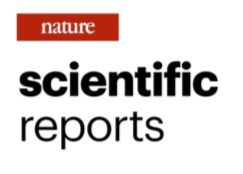Investigating child sexual abuse material availability, searches, and users on the anonymous Tor network for a public health intervention strategy
- Protect Children
- 5 apr. 2024
- 3 min läsning
FORSKNINGSARTIKEL
A groundbreaking peer-reviewed article by an international research team published in the high-level journal, Nature Scientific Reports, sheds light on the alarming prevalence of individuals seeking child sexual abuse material (CSAM) on the Tor network.
Juha Nurmi, Arttu Paju, Billy Bob Brumley, Tegan Insoll, Anna K. Ovaska, Valeriia Soloveva, Nina Vaaranen-Valkonen, Mikko Aaltonen, and David Arroyo. “Investigating child sexual abuse material availability, searches, and users on the anonymous Tor network for a public health intervention strategy”. Scientific Reports, 2024.

Background
An international team of researchers in Finland, the United States, and Spain has completed the first large-scale study of Tor users to discover their search behaviour and to understand how widely CSAM is available through the Tor network. The researchers also conducted an intercept survey to directly engage Tor users and discovered new ways to interfere with abusers’ activities.
The study found that one-fifth of onion domains share CSAM, and that CSAM is easily available on 21 out of the 26 most popular Tor search engines. Analysing 110 million search sessions from the Ahmia.fi search engine, the research team found that 11% seek CSAM, and offenders predominantly search for CSAM depicting children aged 12-16 years old.
The study aimed to find ways to address illegal and harmful behaviour on the Tor network. Besides staging an intervention, the study sought to provide assistance to users. In the study, the search engine identified searches for CSAM and directed users to answer a survey. Simply answering the survey already constitutes an intervention. Over the course of more than a year, users completed the survey a total of 11,470 times.
The findings reveal that 65% of the survey respondents were first exposed to CSAM when they were under 18 years old. Moreover, 48% of CSAM offenders said they want to stop using CSAM, some seek help, however 74% of help-seekers have not been able to receive help.
The article, titled “Investigating child sexual abuse material availability, searches, and users on the anonymous Tor network for a public health intervention strategy”, was published in the Scientific Reports journal on 3 April 2024. The researchers emphasise the urgent need for a public health approach to combat CSAM offending, stating that the spread of CSAM is a complex public health issue that requires a concerted global effort and commitment.
Abstract
Tor is widely used for staying anonymous online and accessing onion websites; unfortunately, Tor is popular for distributing and viewing illicit child sexual abuse material (CSAM). From 2018 to 2023, we analyse 176,683 onion domains and find that one-fifth share CSAM. We find that CSAM is easily available using 21 out of the 26 most-used Tor search engines. We analyse 110,133,715 search sessions from the Ahmia.fi search engine and discover that 11.1% seek CSAM. When searching CSAM by age, 40.5% search for 11-year-olds and younger; 11.0% for 12-year-olds; 8.2% for 13-year-olds; 11.6% for 14-year-olds; 10.9% for 15-year-olds; and 12.7% for 16-year-olds. We demonstrate accurate filtering for search engines, introduce intervention, show a questionnaire for CSAM users, and analyse 11,470 responses. 65.3% of CSAM users first saw the material when they were children themselves, and half of the respondents first saw the material accidentally, demonstrating the availability of CSAM. 48.1% want to stop using CSAM. Some seek help through Tor, and self-help websites are popular. Our survey finds commonalities between CSAM use and addiction. Help-seeking correlates with increasing viewing duration and frequency, depression, anxiety, self-harming thoughts, guilt, and shame. Yet, 73.9% of help seekers have not been able to receive it.


